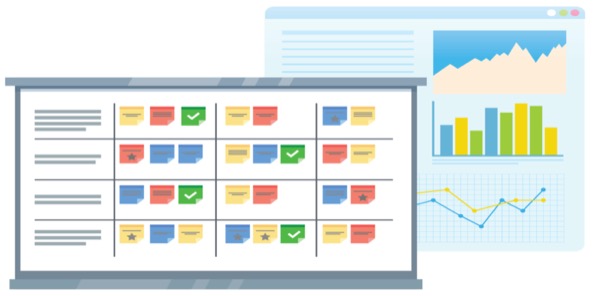PHOENIX—High-quality standards, ongoing risk assessment and communication with leadership are crucial to keep reprocessing activities running smoothly and safely in endoscopy units, according a presentation at the 2023 annual meeting of the Society of Gastroenterology Nurses and Associates.
The cornerstone of safety management is risk assessment. It’s a “fundamental” aspect [of] monitoring corrective measures related to high-level disinfection in the endoscopy suite,” said Jim Collins, BS, RN, CNOR, a practice manager at Cleveland Clinic’s Digestive Disease & Surgery Institute, in Cleveland.
Risk assessment, which includes tasks such as gathering and interpretation of data to support high-level disinfection (HLD), can be combined with staff management techniques to help lower infection rates across endoscopic procedures, Mr. Collins said.
The main aspect of this approach, he explained, is to assess the current HLD process with a fine-tooth comb. “We want to look at any vulnerable HLD processes. Do you have high-risk endoscopes? Do you need to scope those elevator systems?” Mr. Collins asked.
Staff should assess risk posed by a hazard and identify actions needed if current measures prove inadequate, he said. Risk can be graded by likelihood and severity with action plans developed in-house to address the hazard. He recommended grading from medium to high risk based on the likelihood of harm to patients. However, he pointed out that risk assessment can be subjective. To address this, more than one person should assess the risks. “I always ask when [risk assessments] are done, they’re done by two people,” Mr. Collins advised.
He also recommended cautiousness when grading because it’s better to be safe than sorry. “I always score heavy,” he said. “It’s better to score something heavy and be told you’re [over]-worried than to underscore and have a potential threat develop down the road.”
Another tip, Mr. Collins said, is to keep a time line of different parts of the HLD process that includes expectations for when certain tasks will be completed. “If you don’t keep everyone on track, things move at glacial speed,” he said, and “they’ll never get done.”
Following Regulations And Protocols
Regarding disinfection, a variety of guidelines need to be followed for the safety of the patient and healthcare workers who are disinfecting or handling the endoscopes. Regulations from the Occupational Safety and Health Administration call for personal protective equipment and certain vaccinations to limit disease spread. The Environmental Protection Agency has regulations for how to use chemicals in cleaning and disinfection.
Staff members must follow manufacturers’ instructions for use, too, Mr. Collins said. “We have a hierarchy of documents to follow,” he said. “We have state and local governmental [regulations] to be met, too, and if you take CMS [Centers for Medicare & Medicaid Services] payments, you have to meet conditions set forth by the Department of Health and Human Services.”
Being up-to-date on various regulations is very important, Mr. Collins said, and staff members not only need to be monitored but also need to know they are being monitored closely. “We want to ensure competent staffing for each model of industry,” Mr. Collins said. “They need to know HLD manual and automated processes and have ongoing education with competency skill verification, because when you watch your employees, the Hawthorne effect kicks in. Everyone does the right thing when being observed.”
Laura Habighorst, BSN, RN, CAPA, CGRN, NPD-BC, an independent consultant and educator based in Kansas City, Mo., who was not involved with the presentation, agreed. “It’s important for them to understand they cannot take shortcuts in their jobs. We often use the sentence, ‘Would you want to use the scope you just cleaned on your mom?’
“The process for performing HLD of endoscopes is a human process. It relies on a person to remember over 100 steps from point-of-care cleaning to storage. No one person can do that, and, as a result, workarounds occur with detrimental results.”
Because HLD depends on knowing the whole process inside and out, manual and automated, Ms. Habighorst recommended reaching out to scope manufacturers for specific training. “Bring your scope and equipment manufacturers in on a regular basis for training,” she said. “Develop a rapport with these companies, as they will help you. Most have clinical nurse educators who will do teaching as needed.”
Leadership and Your Team
Both Mr. Collins and Ms. Habighorst suggested that keeping leadership apprised can help risk assessment at a high standard. “Leadership has the ultimate responsibility for the endoscopy unit and reprocessing areas,” Ms. Habighorst said. “Their role ensures manufacturers’ instructions for use are followed, [and that there is] appropriate orientation, ongoing education, and implementation of changes within endoscopy rules, regulations, guidelines and accreditation.”
The disinfection and reprocessing team should be composed staff with various skill levels, Mr. Collins said, so that the labor can be divided among the members. Ms. Habighorst agreed that each member of the team brings his or her own expertise. “A multidisciplinary team,” she said, “can only make significant and meaningful changstaff with table and their concerns are listened to and built upon.”
—Sherree Geyer
Mr. Collins and Ms. Habighorst reported no relevant financial disclosures.

